► Final Mii city car was a brilliant EV
► 161-mile range, 156lb ft of instant torque
► No compromise, no intimidation factor
Who needs a bespoke platform to make a great electric car? Seat certainly didn’t when it came to the Mii Electric, which proved that a useful driving range, fun driving experience and an affordable price were all possible in the same compact package. So much so that the Seat Mii Electric replaced the internal combustion models entirely in 2020.
Skoda took the same approach with the Citigo for the brief time it was here: it became the Citigo-e iV and then duly sold out, leaving only the Volkswagen Up with a petrol engine across VW Group’s city car line-up. That and the VW e-Up electric version have now also gone the way of the dodo.
Sad, then that the Seat Mii Electric was discontinued in 2021 as well. But it still makes a great used buy if you’re in the market for a tiny-yet-practical all-electric runaround. There was only one version, one trim level and no options, so no need to worry about which extras you can and can’t afford, either.
Electrifying a city car makes sense, right?
If you’re going to extinguish the internal combustion engine from a whole model range, the city car is a good place to start. They’re mostly bought as second cars anyway, and electric power is more than up to runabout status.
Don’t get us wrong. If you want to do longer journeys, this is a small car that’s comfortable in general and at motorway speeds – but obviously offers neither the driving range nor the refuelling convenience of a conventional engine.
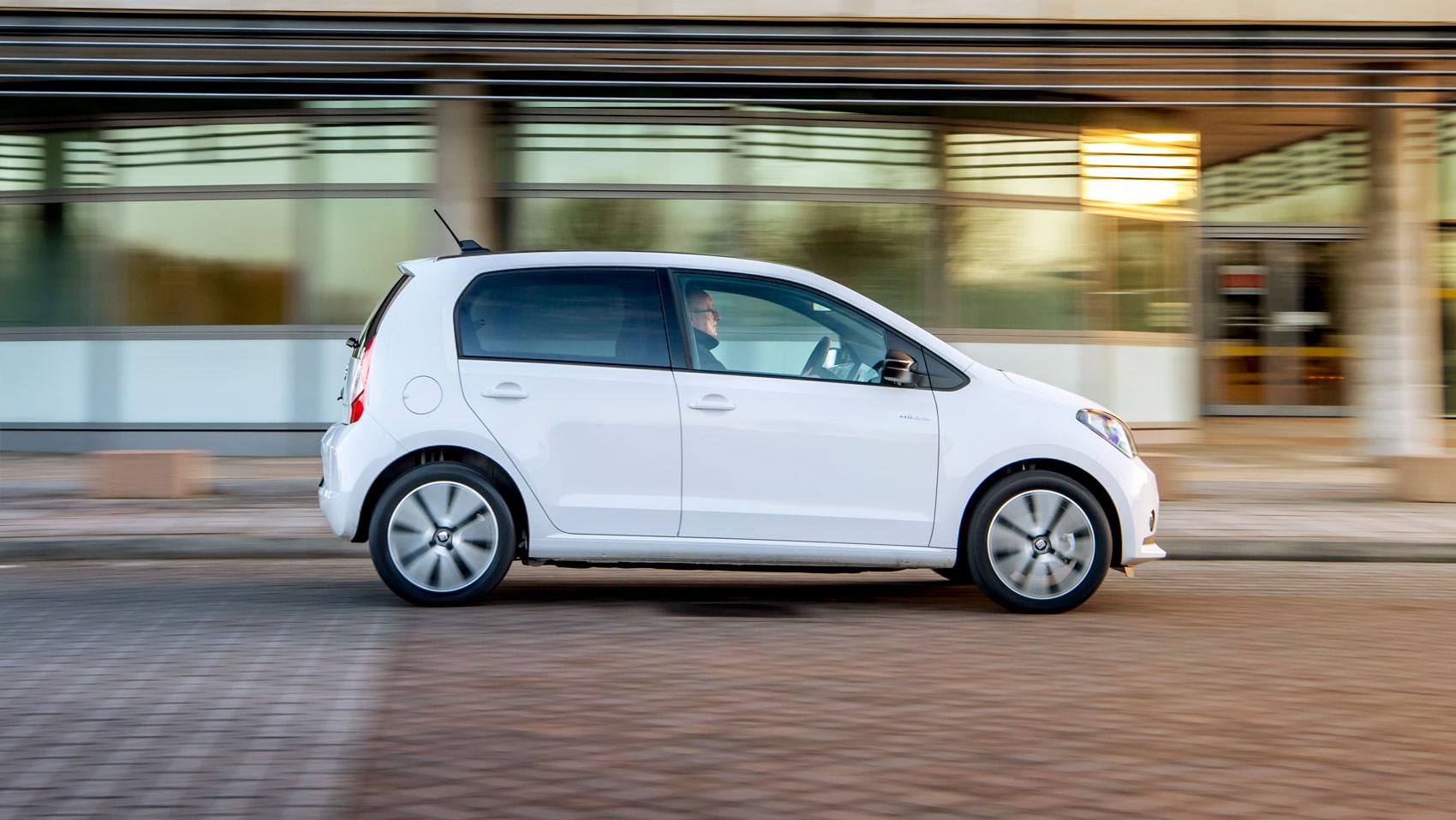
What’s particularly good about the Mii Electric, however, is just how ordinary it feels. Not in the sense that it’s boring – it’s actually quite fun to drive – but rather in the way that it presents itself as just another car, rather than making a special effort to be an electric one.
If you don’t like that approach, there are plenty of alternatives. But for many buyers, the absence of eyebrow-raising styling and a weirdly futuristic interior will be something of a comfort as they consider taking a first step into the brave new world of electric car ownership.
The Mii doesn’t even have a wacky grille. If you want one of those the Citigo-e’s got you covered.
What’s the Mii Electric driving range and how long does it take to charge?
Tested to the latest WLTP standard the Mii’s 36.8kWh battery (which is confusingly listed as 32.3kWh in some literature – it’s the same thing) is capable of an overall claimed range of 161.5 miles.
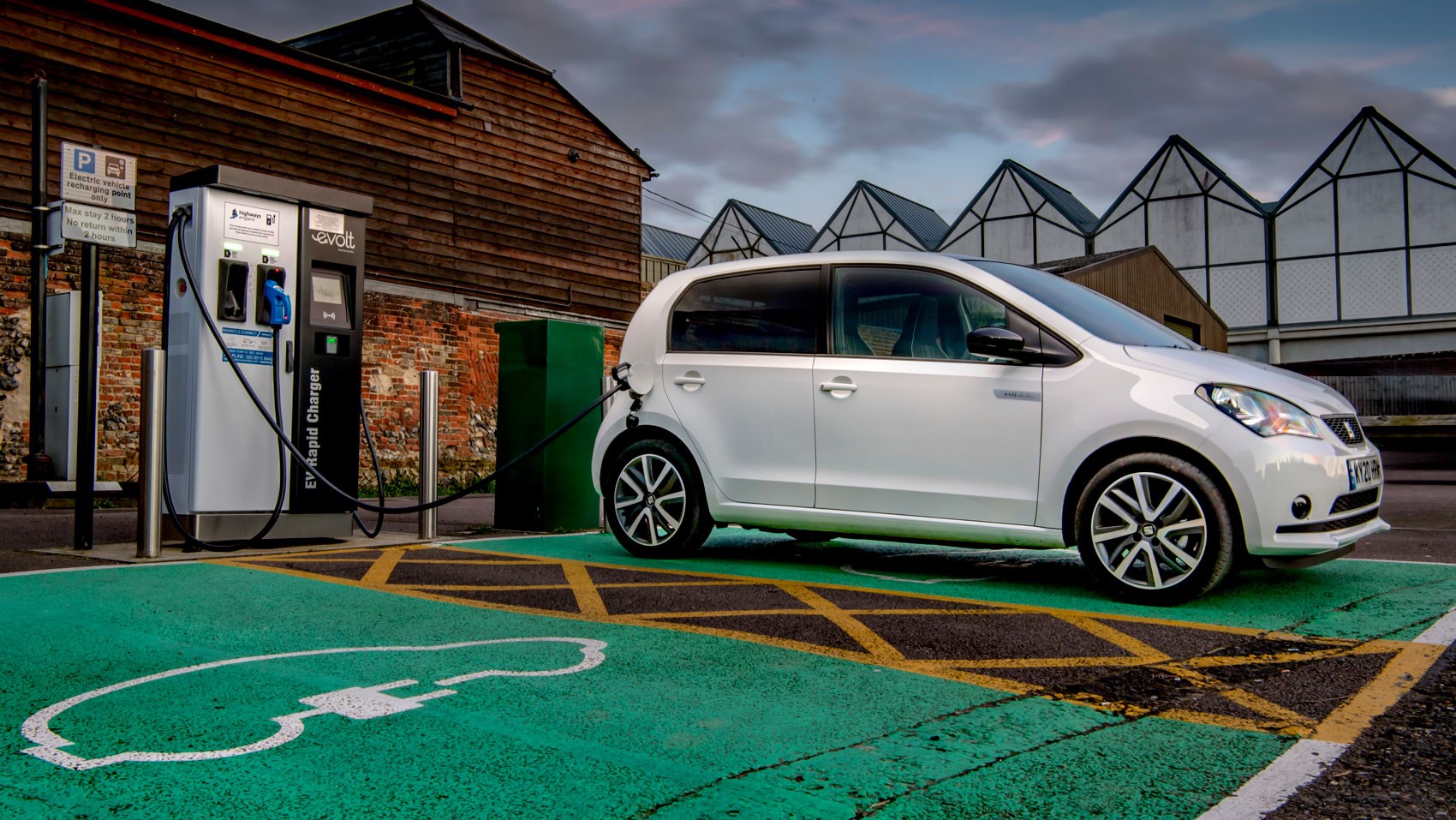
This is a figure that requires some real-world cynicism still, but it’s clearly going to be enough for anyone who plans to simply potter around town and shouldn’t leave you too stressed if you’ve got a 100-mile round-trip commute.
And while it’s someway short of the 250-mile claim made by the equivalent Renault Zoe, it’s also 25 miles more than the Honda E – and both of those rivals cost around £7000 more when the Mii Electric was new.
The Mii’s Eco and Eco+ driving modes help eke-out the miles if you start to get nervous, and there’s a choice of four brake-energy recuperation modes activated by the gear selector to increase regen and enable one-pedal driving in stop-start traffic.
Charging time varies with the type of charger, as you’d expect, but comes in at a pretty standard 13-16 hours on a three-pin plug and around 5.5 hours via a 7kW home wallbox, while you can get 80 per cent in about 40 minutes using a the public charging network.
What’s the Seat Mii Electric like to drive?
To be perfectly honest, we were rather fearing it would be like a golf cart with doors – which is an old cliché but one that springs immediately to mind given the Mii’s boxy proportions. Gladly, it isn’t at all.
Instead you get near-silent motivation with exactly the kind of torquey insta-response that sells electric cars so well and makes them so ideal for competitive city traffic. At 1235kg, the Mii Electric is 299kg heavier than a petrol model, yet with 82bhp and 156lb ft – which is available as soon as the motor starts spinning – is still the fastest-accelerating version Seat has ever produced.
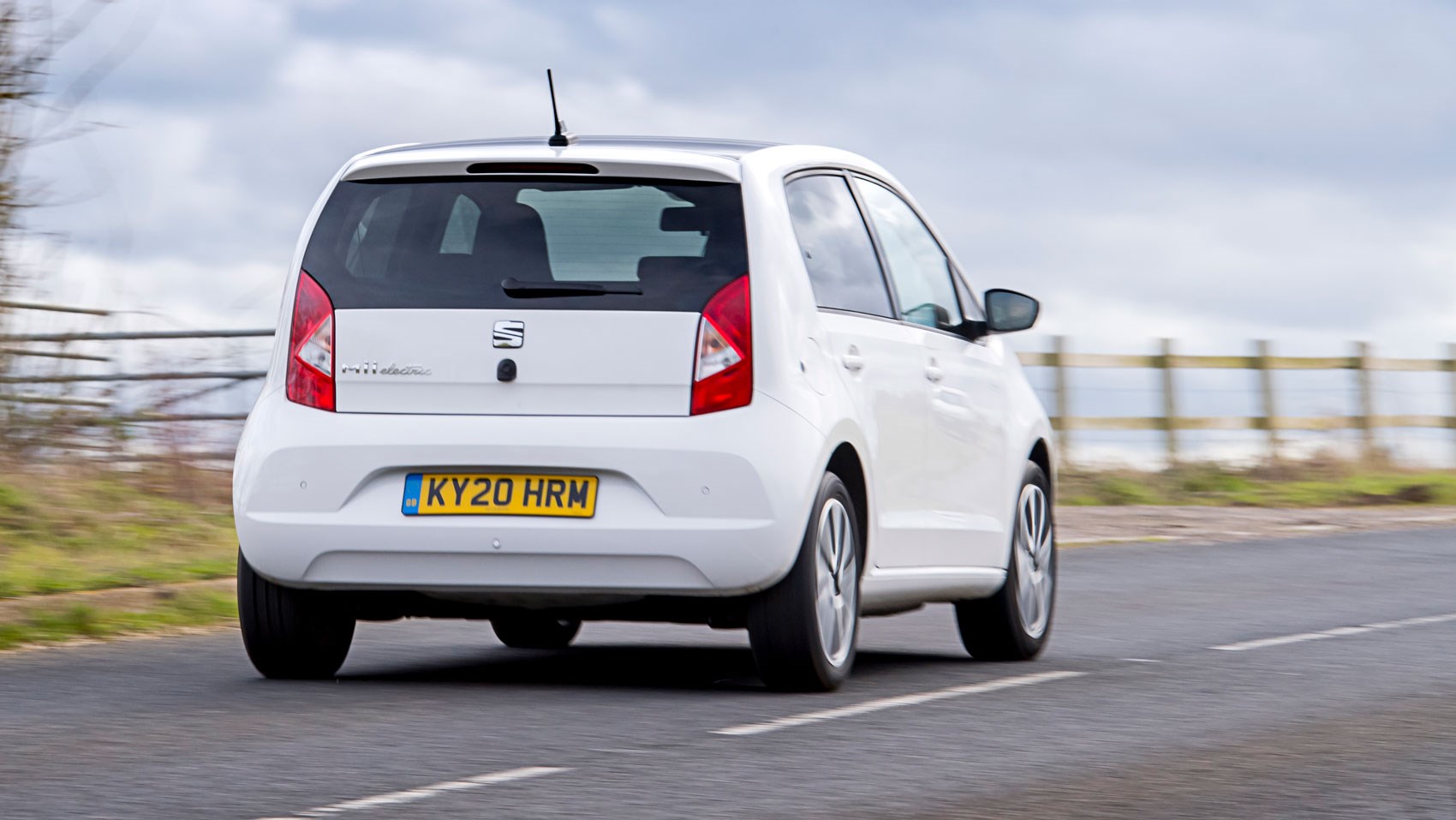
The figure the engineers were especially proud of at launch is the 3.9sec 0-31mph time, apparently a new segment benchmark at the time. Trundling on to 0-62mph in 12.3sec is less impressive, but by that point you’re probably already ahead of the lumbering SUV that was edging to cut you up at the traffic lights. For its intended use, the 80.7mph top speed hardly seems like a limitation.
The best thing about all this is the predictability of the Mii’s reactions at urban speeds. The single-speed transmission means you’re never in the wrong gear and the electric motor gives its all as soon as you stab the go pedal. There’s not even much of a hum – it just zaps forward and you’re into that gap, often one no larger car would have contemplated.
As with most electric cars, this immediacy tails off as you go faster, but the Mii still has enough accelerative pace to take the fear out of short slip roads – something you couldn’t always say about the petrol version.
While the steering isn’t exactly alive with feedback there’s no slop or vagueness about it, building that confidence you need to go street-fighting in rush hour or charging around the outside of a roundabout. The batteries are under the rear seats, which helps with the centre of gravity and grip, and the body roll that comes from the surprisingly deft suspension compliance only becomes an issue with staccato high-speed direction changes.
Presumably the interior space has been compromised?
Depends on how you feel about the rear-seat passengers being 5cm higher than they were. This is the only spatial difference between the Electric and petrol versions – and since the Mii has always been blessed with plenty of headroom this isn’t really an issue.
Boot space is the same 251 litres with seats up, too. No good if all four of the adult passengers who will (just about) fit inside want to bring lots of luggage, but plenty for a car that’s just over 1.6m wide and just under 3.6m long. Load volume rises to 923 litres with the rear seats folded.
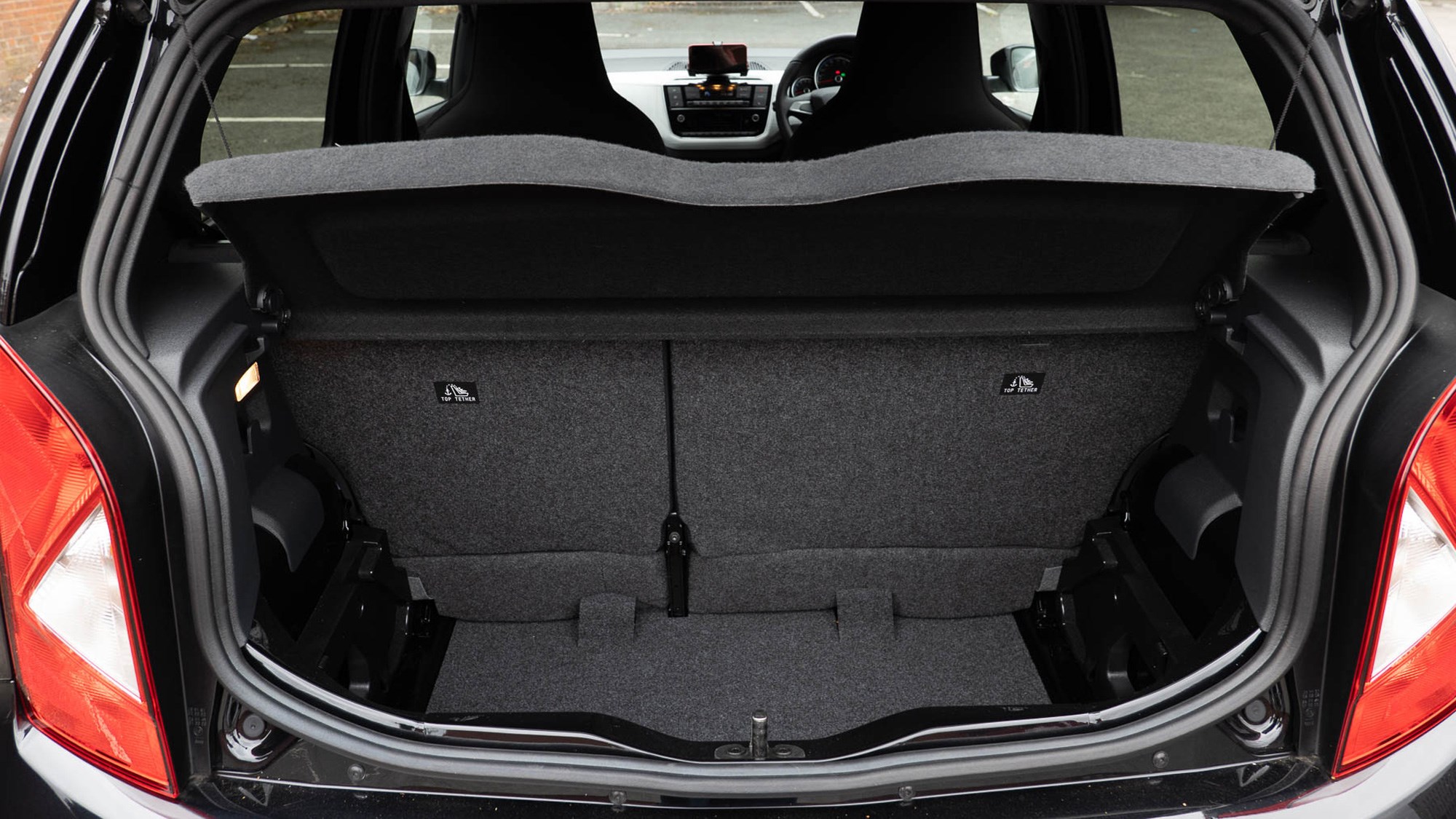
It doesn’t even feel particularly cheap inside. The door plastics are a little rough and ready, and the black leather steering wheel achieved almost the opposite of its intended quality-boost role, but the new foiled dashboard decoration, some rather lovely seat upholstery and the general togetherness of the interior makes this seem like a very grown-up product, mired only slightly by the wind noise that’s no longer drowned out by a combustion engine.
It doesn’t look very futuristic inside, either
No, it really doesn’t. Seat has gone for quiet, functional style here instead. Cosy and familiar rather than outlandish and new.
You get a trio of analogue dials in the gauge cluster that are clear to understand and entirely unintimidating. But some buyers might be put off by the lack of a fully integrated central touchscreen.
Instead the Mii Electric was designed to interface with your smartphone via a dedicated dock on the dash top and a pair of new apps called Mii Drive and Seat Connect. These take care of everything from driving displays to remote access (including lock/unlock via your phone and GPS recovery of your lost mind when you’ve forgotten where you parked), though the TomTom sat-nav isn’t a patch on Google Maps.
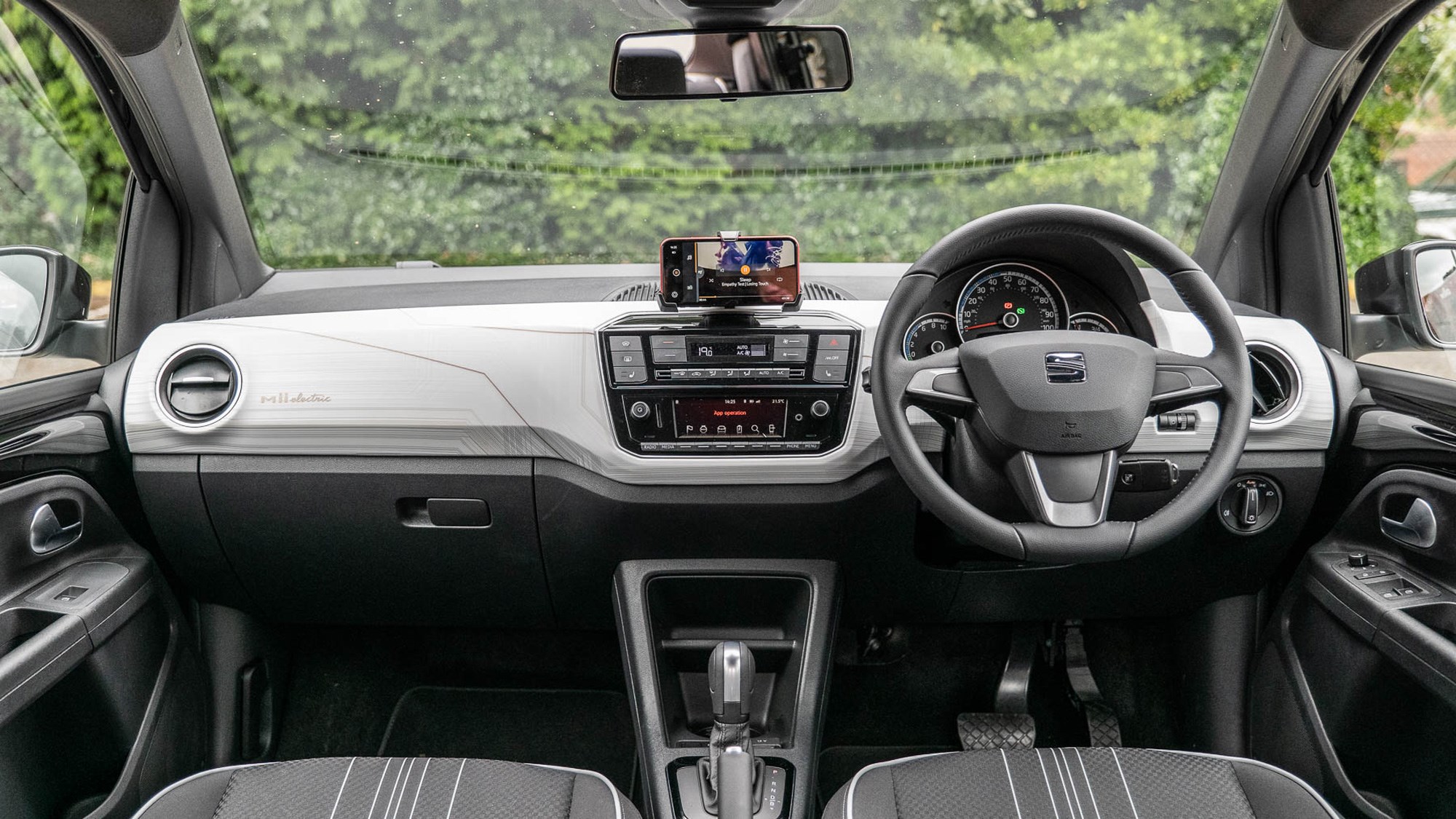
Was this a misstep, or a smart recognition that almost all our lives revolve around our mobile devices now? Certainly it was another way to keep the Mii Electric’s price down. The newly included traffic sign recognition and lane keeping assist (easily disabled via a clear button on the dash) were a reasonably fair exchange. Maybe.
That someone in the press conference actually asked if the Mii Electric would function without a phone – it will, don’t panic – is perhaps an indication that not everyone is ready for this kind of conglomeration. But will such people be buying an electric car? You might argue why shouldn’t they…
Seat Mii Electric verdict
The Mii Electric is a thoroughly successful evolution of an already excellent city car.
The brilliance here is that it Just Feels Like A Car. There’s no intimidation factor at all, and the range is such that for most everyday tasks you’re unlikely to even think twice about it. This leaves you free to enjoy the silent running and outstanding perkiness electric power provides, things that make every journey more pleasant.
If you just want a good value runabout that manages to feel well made and mature despite its diminutive dimensions and just happens to also do without a combustion engine, the Mii Electric is a fine place to start.
It’s a pity production came to an end so swiftly, because few of the latest small EVs can match it for value (Mini Electric, Honda E – we’re looking at you). The only new model that gets close to the original £20k price tag is the 24kWh version of the Fiat 500 Electric.